Battersea Power Station, London
Project Overview
In a remarkable regeneration project, IKO, alongside installation contractor, BriggsAmasco, took on the challenge of delivering a comprehensive, multi-application waterproofing and insulation solution for London’s iconic Battersea Power Station. The decommissioned coal-fired power station, located on the banks of the River Thames, was renowned for supplying electricity to some of the capital’s most recognisable landmarks, such as the Houses of Parliament and Buckingham Palace. It lay derelict for decades but recently underwent a huge reinvention, which saw it transformed in a vibrant new mixed-used development, complete with residential, retail and restaurant units. As part of Phase 2 of this multi-million-pound redevelopment, IKO’s roofing systems were used to protect and enhance several critical elements, covering an area totalling 45,000m².
Known as one of the largest urban regenerations of its type in Europe, the Battersea Power Station project earned a prestigious 2024 RIBA Award for its innovation and design excellence. Here, we look at four key elements of the project’s second phase that were worked on and the measures taken to ensure the installation was as sympathetic and sustainable as possible.
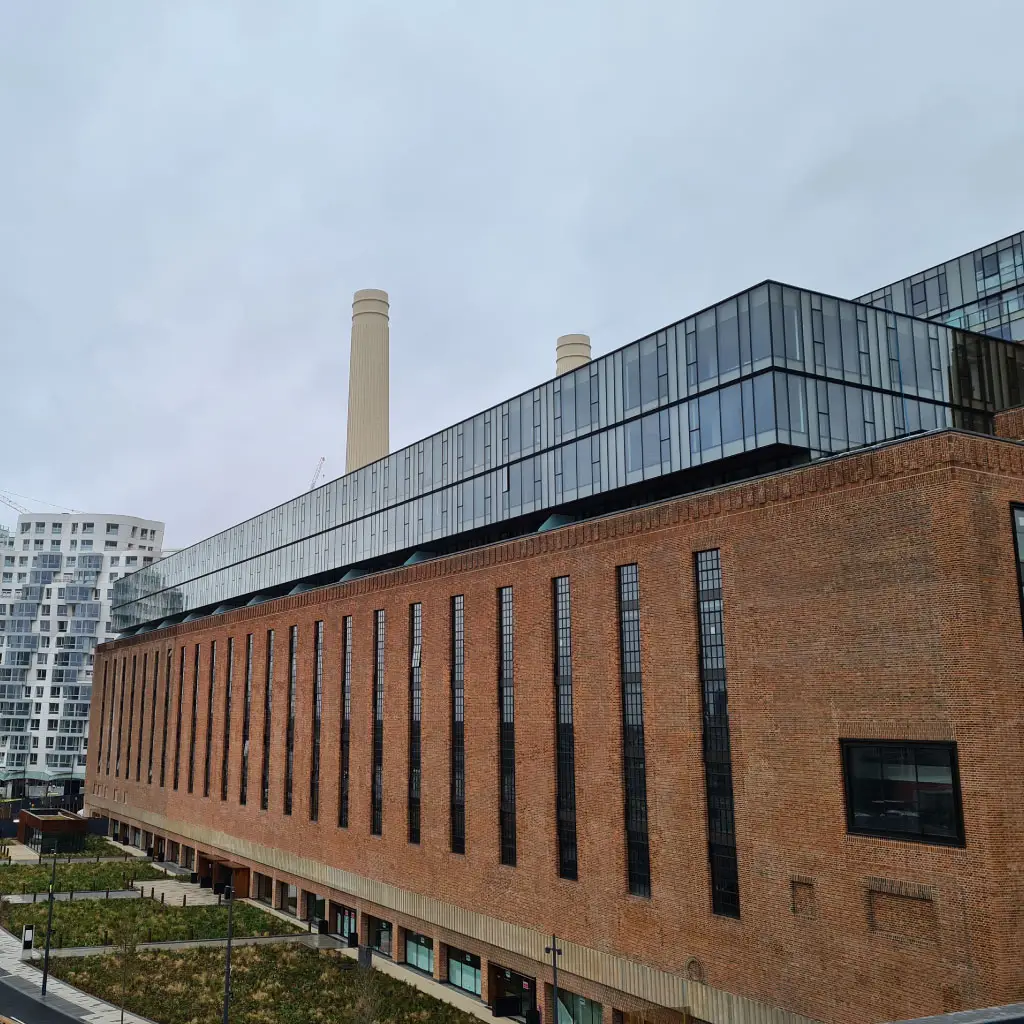
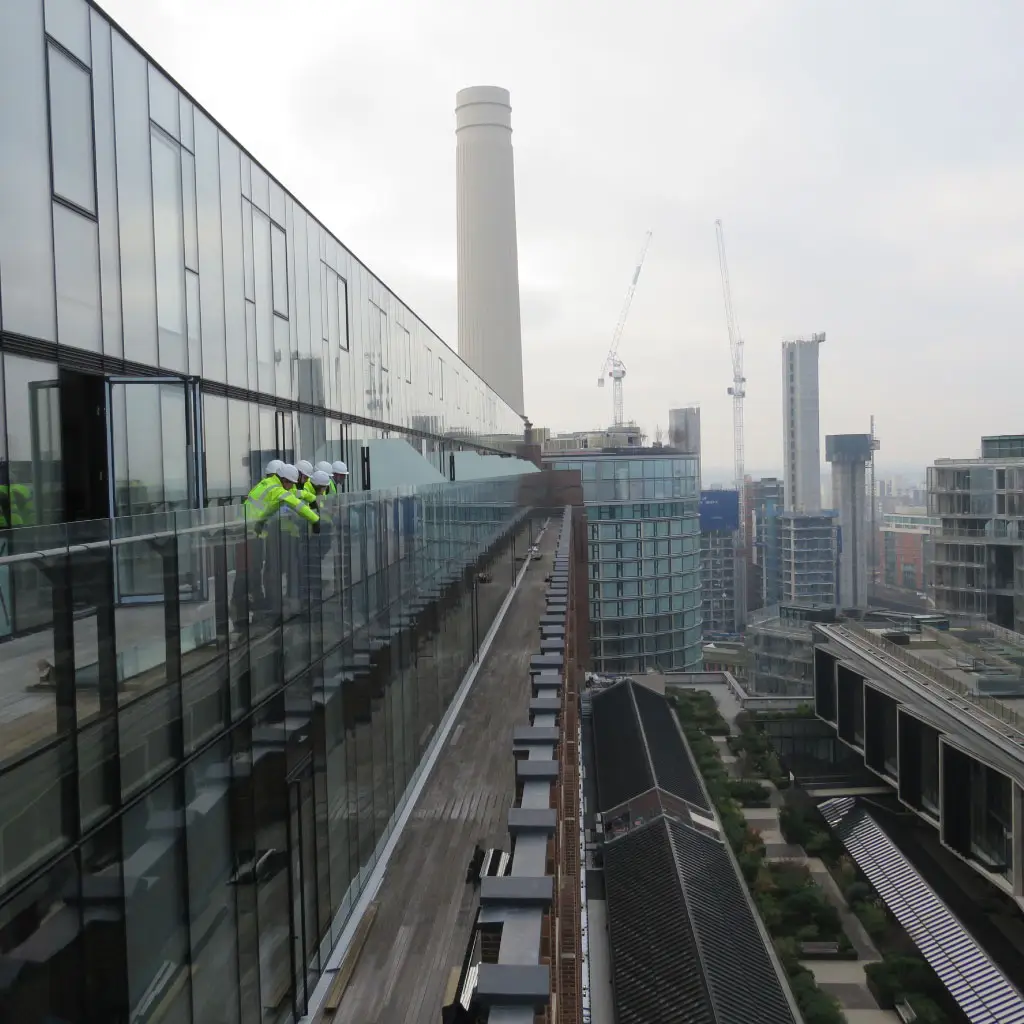
Main Energy Centre
At the heart of the site sat the main energy centre, which housed essential below ground heating and cooling equipment used to power the entire development. To protect this crucial underground hub, a cutting-edge dual-layer waterproofing system was created, which involved a 40mm IKO Permapark mastic asphalt layer being installed on top of IKO Permatec waterproofing. This technique is believed to be an industry first, allowing for the existing underground protection layer to stay intact, minimising waste and environmental impact by avoiding the need for removal and recycling.
Grade II-Listed Chimneys
Battersea Power Station’s four iconic white chimneys, which were carefully dismantled and rebuilt as part of the restoration, needed a solution that honoured their historic legacy while embracing modern innovation. IKO Permaphalt, a specially formulated mastic asphalt system, was chosen to waterproof the famous structures as mastic asphalt was the material originally used when the chimneys were first constructed. However, IKO’s advanced version features cutting-edge polymer technology, enhancing fatigue resistance and temperature stability. Not only did this solution preserve the chimneys’ historical integrity but it also replaced traditional lead with a more eco-friendly, non-polluting alternative, aligning perfectly with the project’s sustainability goals.
Seamlessly applied at the base of each chimney, IKO Permaphalt was layered at a precise 20mm thickness, covering a total of 750m². Beyond the chimneys, the same durable material was used to create a custom peregrine falcon’s nest, measuring 1m², within the chimneys. This thoughtful addition provided a safe, rot-resistant, non-toxic home for the birds, ensuring that both wildlife and heritage were protected for future generations.
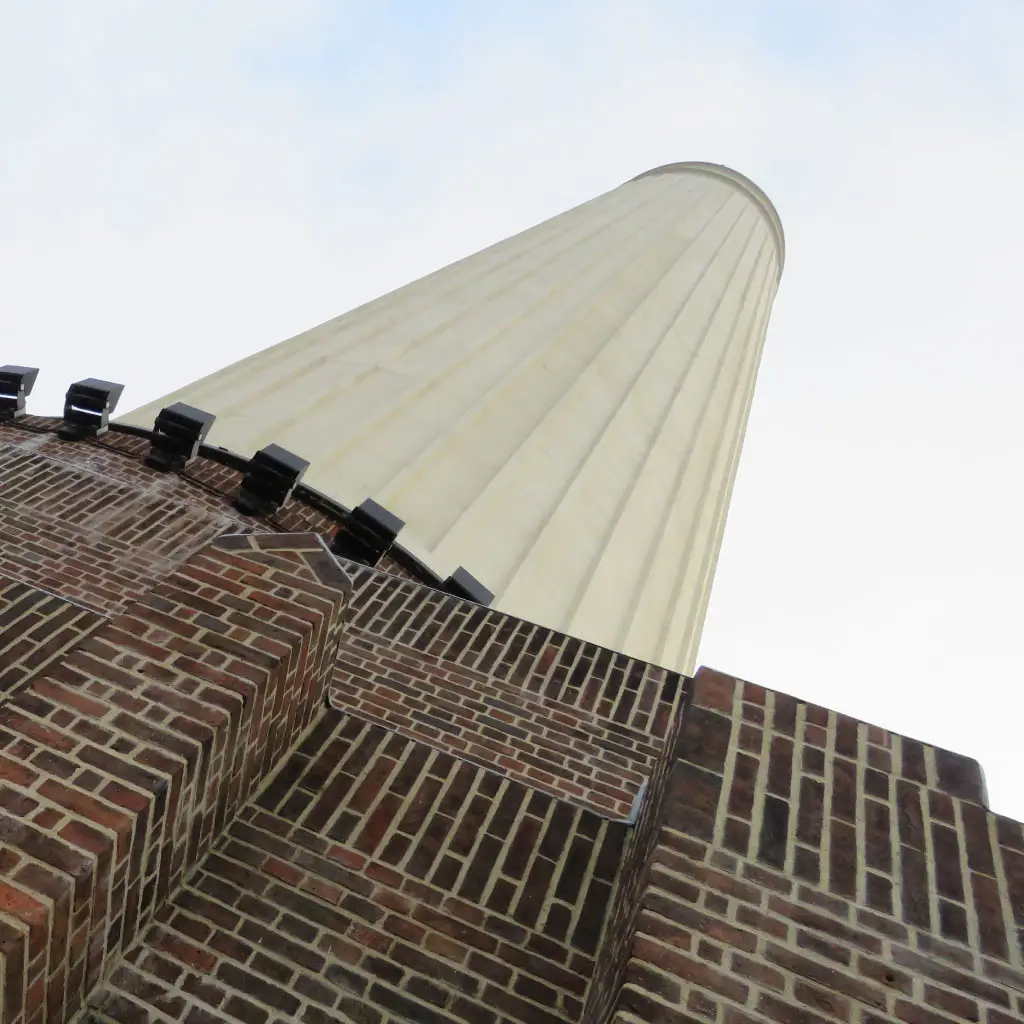
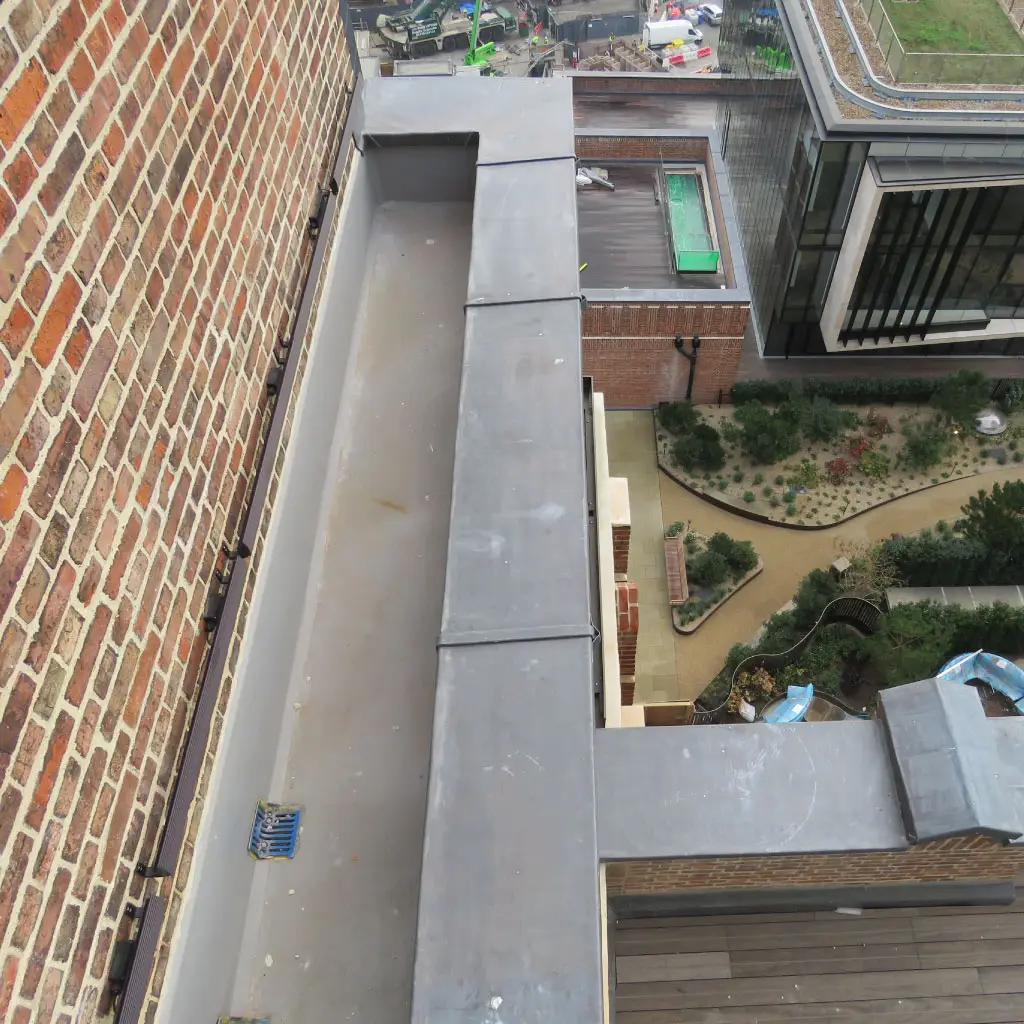
Terrace Waterproofing
For the luxury apartments, BriggsAmasco collaborated with IKO to develop a super-slim PIR/VIP panel to ensure the adjoining terraces achieved optimal thermal efficiency without compromising space or aesthetics.
In each instance, the waterproofing required minimal thickness to maximise the apartments’ floor-to-ceiling heights and the insulation needed to compensate for its slim profile by delivering exceptional thermal performance. The final system achieved an impressive lambda value of 0.006 W/mK, effectively eliminating the risk of cold bridging and ensuring long-term protection and performance. The terraces were completed with the high-performance IKO ULTRA Gold 20 Built-up Felt Roofing System, demonstrating a seamless blend of form and function.
Retail Outlets
Further to the residential areas, BriggsAmasco installed 8,000m² of IKO Permatec waterproofing with IKO enertherm inverted insulation and sedum green roofs across various retail spaces, helping to improve local biodiversity in an urban setting. Stainless steel sun tubes, measuring 8m x 1.2m, were also designed and incorporated into the units to channel natural light into the interiors, limiting the need for artificial light and further enhancing the project’s eco-friendly credentials.
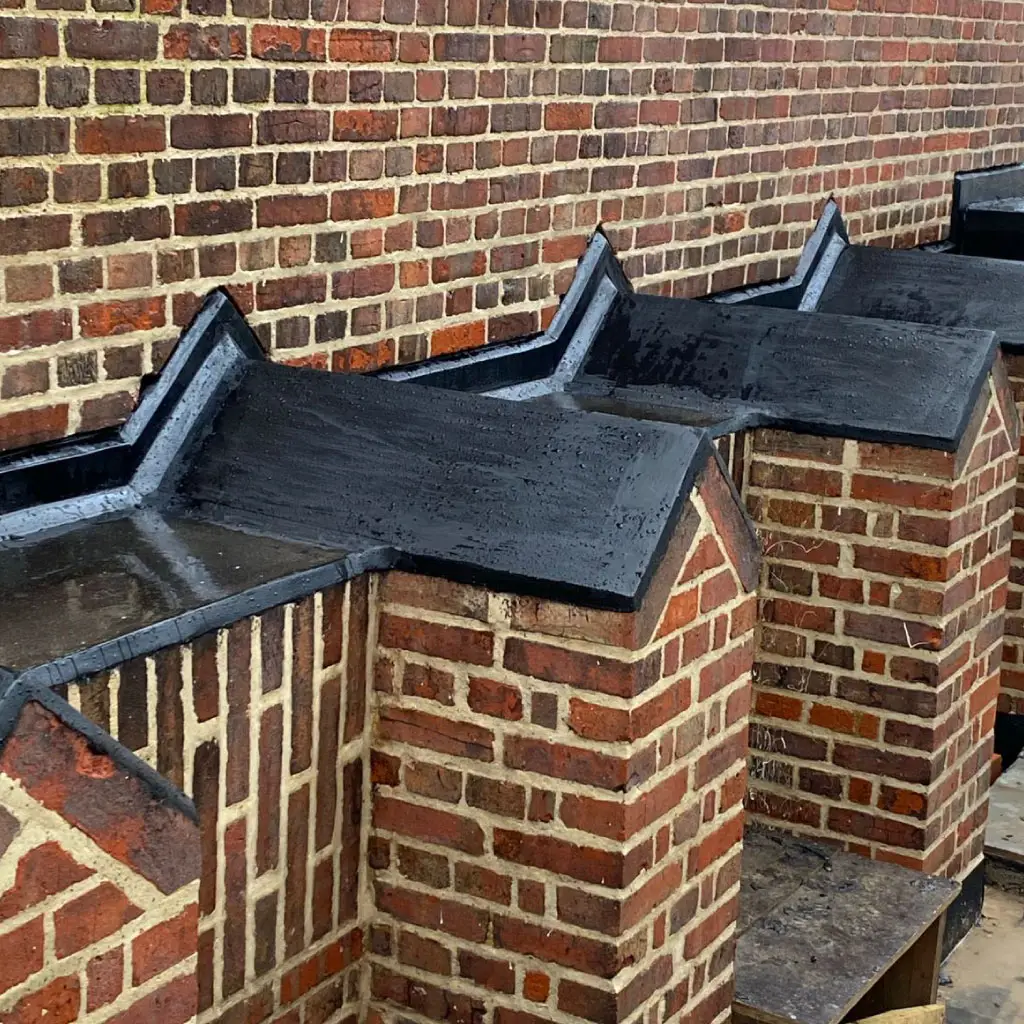
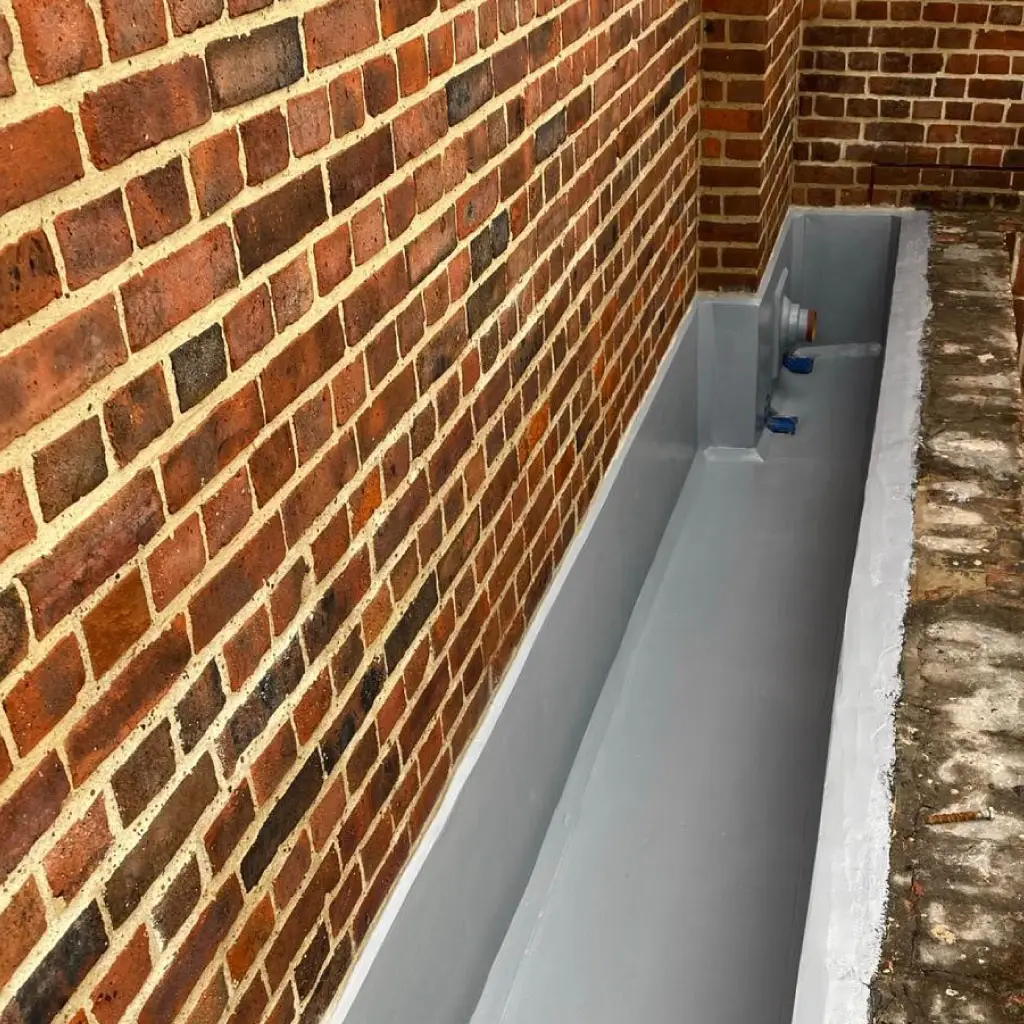
Built for the future
By prioritising innovative materials and sustainable practices, IKO and BriggsAmasco successfully worked together to safeguard Battersea Power Station’s revamped infrastructure, preserving its heritage and enhancing its environmental performance. Every aspect of the project was carefully tailored to meet unique installation needs and sustainability goals. From using zero-emission equipment during the waterproofing process to sourcing 99.9% of materials locally and within the UK, the project set a benchmark in eco-friendly construction.
This regeneration project highlights IKO’s expertise in delivering bespoke waterproofing solutions for complex, high-profile developments, ensuring long-lasting protection and resilient, structurally-sound structures for decades to come.
Reflecting on the success of the project, Tony Lawther, of BriggsAmasco said:
Collaborating with IKO on the Battersea Power Station project was a privilege and an exciting challenge. Together, we created solutions that not only respected the legacy of this iconic structure but also integrated innovative, sustainable materials and processes. We proudly pushed the boundaries of modern waterproofing and insulation technology to ensure that the revitalised Battersea Power Station stands out as a contemporary yet historically-significant landmark, demonstrating what’s possible when sustainability and heritage meet.
Project name and location:
Battersea Power Station, London
Project sector:
Retail & Leisure, Community
Contractor: